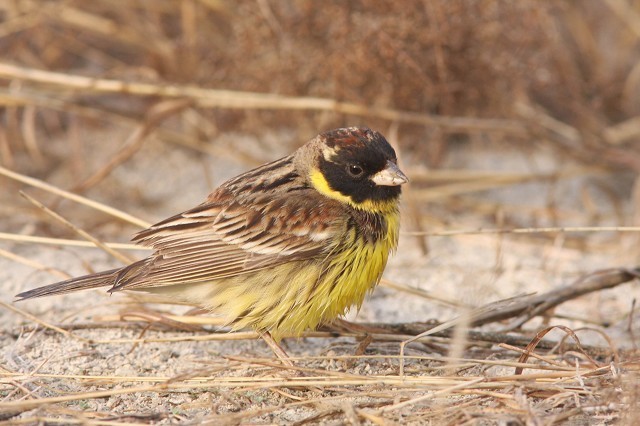Asian migrant songbirds in trouble
A new study has suggested that migratory songbirds in East Asia are in trouble, and has called for national action and international co-operation to deal with the threats posed.
The East Asian–Australasian Flyway, running from Siberia and Alaska down to South-East Asia and Australia, supports the greatest diversity of migratory birds on the planet, with 170 long-distance migrant songbirds and over 80 short-distance migrants.
However, it is also one of most poorly studied of the world's major migration routes. Remarkably little is known about the populations and ecology of many of its songbird migrants, which rely on habitats along the migratory route for their survival.
Lead by scientists from the Australian National University and Sun Yat-sen University and published in BirdLife's journal Bird Conservation International, 'Migratory songbirds in the East Asian–Australasian Flyway: a review from a conservation perspective' draws together what is known and highlights gaps where more study is urgently required. The study reveals that many migratory songbirds are declining in the East Asian–Australasian Flyway, owing to a range of threats operating across many countries. The paper makes a strong case that both national action and international co-operation are needed for effective conservation.

Once common right across Asia, Yellow-breasted Bunting populations have been decimated as they are trapped for food en masse
(Photo: Steve Wilce)
Becky Rush, BirdLife's Asia Flyways Policy Offer, explained: "The flyways concept can help promote collaborative conservation actions between many countries. More governments are recognising that conservation in their own territory is not enough and that they need to encourage protection for species throughout their migratory range."
According to Ding Li Yong, the paper's lead author, migratory songbirds in Asia have received less attention from conservationists compared to waterbirds, even though many songbirds have lost considerable wintering habitat and are in decline. "Ecologically, these songbirds are important because they connect the ecosystems of Asia's boreal, temperate and tropical biomes," he said.
Migration is tough enough for birds, and especially for small birds weighing only a few grammes and needing to refuel often, so any threats that affect them along their migratory route can add up and take their toll on whole populations. Currently available evidence suggests that habitat loss and hunting are the two most significant threats on the East Asia flyway, while other threats like invasive species, climate change and collision with man-made structures can also have a big impact.
Some species, such as the Vulnerable Izu Leaf Warbler and Pleske's Grasshopper Warbler, are particularly at risk not just because of their small breeding ranges, but that their entire wintering ranges remain unknown to scientists — thus hampering effective conservation. The Endangered Yellow-breasted Bunting used to be abundant, but has drastically declined as large numbers are trapped annually for food in South-East Asia and southern China.
The study goes on to highlight ways in which these declines can be stopped. Conservation of key habitats, better protection of key breeding, migration and wintering sites, and better enforcement of national legislation will all be needed. Additionally, international and national treaties and legislations need to be extended to include migratory songbirds.
One priority identified in the paper is to expand and standardise monitoring and increase research to understand populations and threats in more detail. This will need to target some of the most poorly known migratory songbirds in Asia, including the Vulnerable Rufous-headed and Black-throated Robin.
"There is a need for more monitoring, and especially more coordinated monitoring, across Asia," said Rush. "The number of birdwatchers in Asia is increasing rapidly, and in some cases their data are already contributing to our understanding of songbird distribution and status." One promising development is a new project which BirdLife Asia is helping to develop in China, South Korea and Japan, to promote international co-operation on the monitoring and conservation of migratory landbirds.
While data from citizen science and more formal monitoring schemes will definitely help to improve knowledge, conservation action is needed now to address the immediate threats to migratory songbirds that have already been identified.

